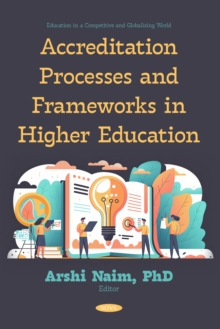
Continuing Engineering Education Handbook PDF
Edited by Jr. Charles E. Baukal
Part of the Education in a Competitive and Globalizing World series
Description
The book is divided into four sections. Section One includes two chapters on history. The opening chapter of the book introduces the subject of continuing engineering education (CEE).
There are general sections on continuing education and engineering education and then the subject of CEE is presented.
The chapter concludes with some sources for further information including relevant organizations, journals, and workshops.
The second chapter in the section is on the 50-year history of engineering distance education at Iowa State University.
A timeline with notable events is presented along with the key people involved in the program.
Section Two concerns instructional design and contains five chapters.
The first is on the learning preferences of working engineers.
It presents the results of a study on the learning strategy and verbal-visual preference of engineers working in the oil and gas industry.
The results show that the engineers surveyed have statistically significantly different preferences compared to the general population.
They prefer problem solving and are highly visually oriented.
The second chapter shows how learning styles have been incorporated into a course on process heaters.
The learning styles include print, aural, interactive, and visual.
The use of multiple learning styles helps training content to match the preferences of most participants.
The third chapter in the section provides guidelines for selecting multimedia for CEE.
The primary takeaway is that engineers are highly visual so training content should be designed accordingly.
Examples include drawings, photos, videos, animations, and virtual reality simulation.
The fourth chapter provides recommendations for effective instructional practices for CEE.
It discusses hybrid, converged, and hyflex delivery modes.
The 60-year curriculum and the growing impacts of alternative credentials and virtual/augmented/extended reality are presented.
It concludes with some work and learning models in effective instructional practices.
The fifth chapter in the section presents the use of virtual reality (VR) and augmented reality (AR) in CEE.
Brief histories of VR and AR are given. The human factors of information overload, verbal and non-verbal communications, sight, sound/auditory, gated response, and touch are discussed.
Cognitive psychology subjects of sensory memory, iconic memory, echoic memory, split attention effect, automated behaviors, kinesthetics, chunking, and serial position effects are briefly described.
VR/AR integration and extensibility show the power of contextualizing information for users.
Section Three focuses on CEE delivery and administration.
The first chapter in the section discusses the results of a survey of working engineers to determine their CEE practices and preferences.
It includes results such as how many courses engineers take each year, what types of courses they take (technical; management; environment, health, and safety; legal; and other), what fraction of the course is mandatory including what fraction is required by the participant's organization and by outside organizations, the fraction of courses taken that are taken for credit, and how many courses are taken after normal working hours.
It also presents data on what those same working engineers preferred regarding their CEE.
The second chapter provides detailed information on how to conduct effective virtual (distance) training courses including the instructional design and delivery platforms.
The third chapter in the section describes combustion CEE training designed for the oil and gas industry.
While it is for a specific industry, the general principles apply universally.
It also includes some case studies of classes conducted at clients' sites.
The fourth chapter discusses the many types of potential CEE providers categorized by internal, external, and hybrid providers.
Providers include the engineer's own organization, universities/community colleges, training organizations, vendors, professional societies, trade organizations, government, and consultants.
It is recommended that organizations choose the combination of providers that makes the most sense for their particular situation which usually will include a combination of providers.
The fifth and last chapter in the section describes how to build a sustainable administrative organization for delivering CEE.
It provides cultural implications, organizational design models, the four-phase natural evolution of an organization delivering online CEE, a matrix organizational design model, the new professional working adult learner, and changing demographics.
The fourth and last section concerns the future of CEE and includes three chapters.
The first chapter describes a sustainable future through the 60-year curriculum model.
It discusses the changing postsecondary landscape, the relevance of the model, adapting to the curriculum, the role of CEE in pioneering the 60-year curriculum, and mapping higher education's future in the context of the 60-year curriculum.
The second chapter in the section discusses sustainability education and research in action (SERINA), developed by the International Association on Continuing Engineering Education (IACEE).
The executive committee used the United Nations 17 Sustainable Development Goals (SDGs) as a benchmark tool to evaluate SERINA.
The purpose of SERINA is to provide practical tools for engineers to help meet the SDGs.
The final chapter of the section and of the book suggest some future research areas for CEE.
They are broadly categorized under learning preferences, curriculum, VR and AR, and multimedia.
Information
-
Download - Immediately Available
- Format:PDF
- Pages:373 pages
- Publisher:Nova Science Publishers, Inc.
- Publication Date:23/05/2022
- Category:
- ISBN:9781685079062
Information
-
Download - Immediately Available
- Format:PDF
- Pages:373 pages
- Publisher:Nova Science Publishers, Inc.
- Publication Date:23/05/2022
- Category:
- ISBN:9781685079062










